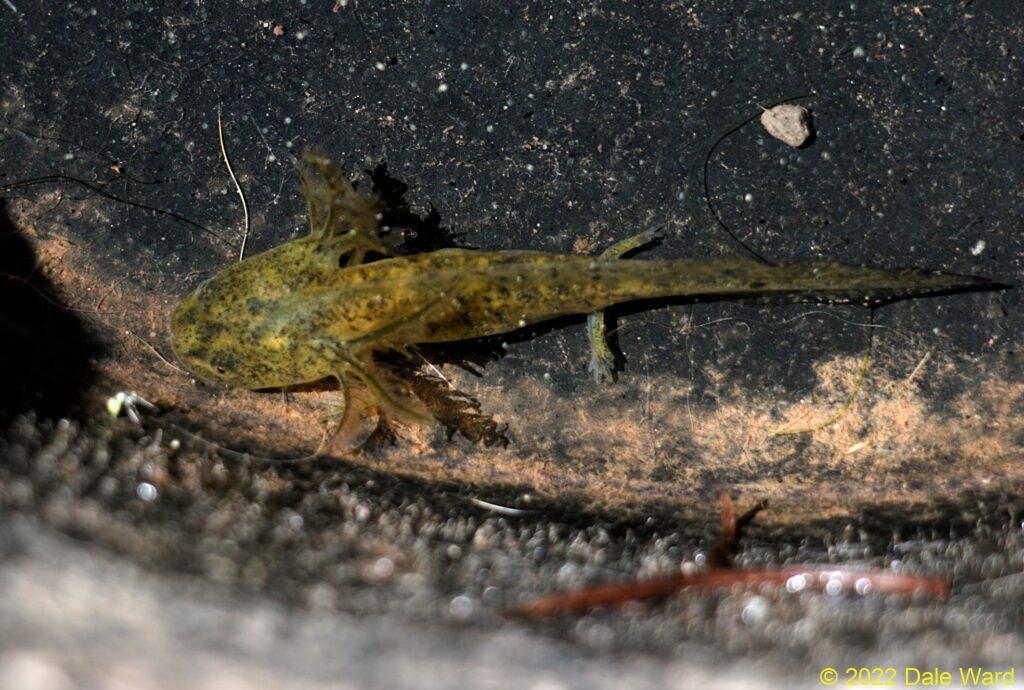Colorado Tiger Salamanders in Late Spring
I recently (2022-06-08) made a trip to check on some of my local Tiger Salamander tanks. Southwestern Colorado is still in a severe drought, so most of the tanks were bone dry. One exception, though, was this one on the…
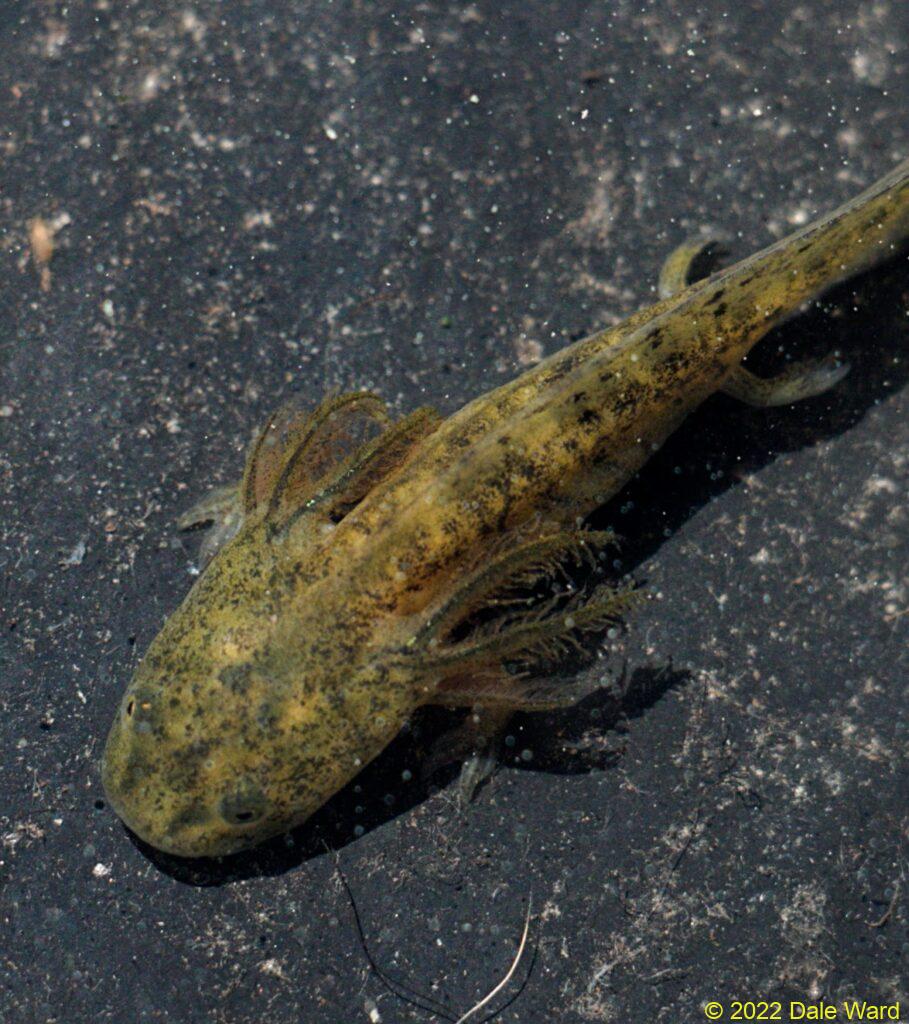 Larval Tiger Salamader posing in a “field expedient aquarium”.
Larval Tiger Salamader posing in a “field expedient aquarium”.
I recently (2022-06-08) made a trip to check on some of my local Tiger Salamander tanks. Southwestern Colorado is still in a severe drought, so most of the tanks were bone dry. One exception, though, was this one on the San Juan National Forest. It’s at an elevation of about 7500’.
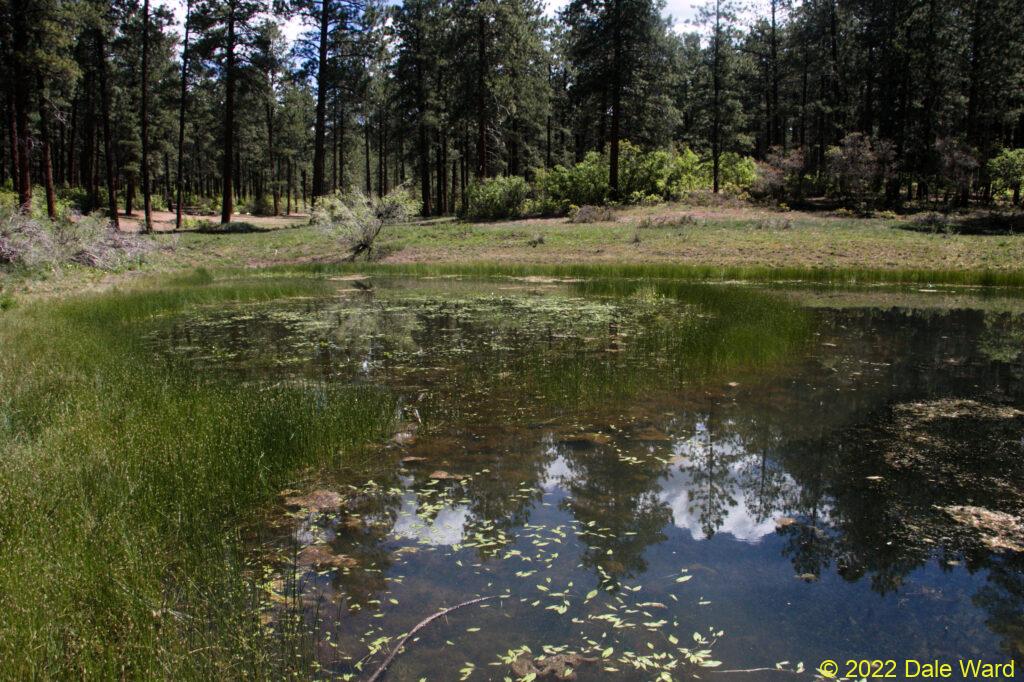 Tiger Salamander tank. The water is much lower than usual this year, but given the drought, I was very pleased to see any water in it at all.
Tiger Salamander tank. The water is much lower than usual this year, but given the drought, I was very pleased to see any water in it at all.
The tank is perhaps three or four feet shallower than usual, and is perhaps two-thirds of its normal surface area for this time of year.
But! It’s got water in it.
And it was seething with life.
I slowly walked along the bank, watching for Salamander larvae. I saw dozens of them. They were about an inch and half long at this point.
I saw some of the small larvae coming up to the surface to grab a breath of air, as in the photo below.
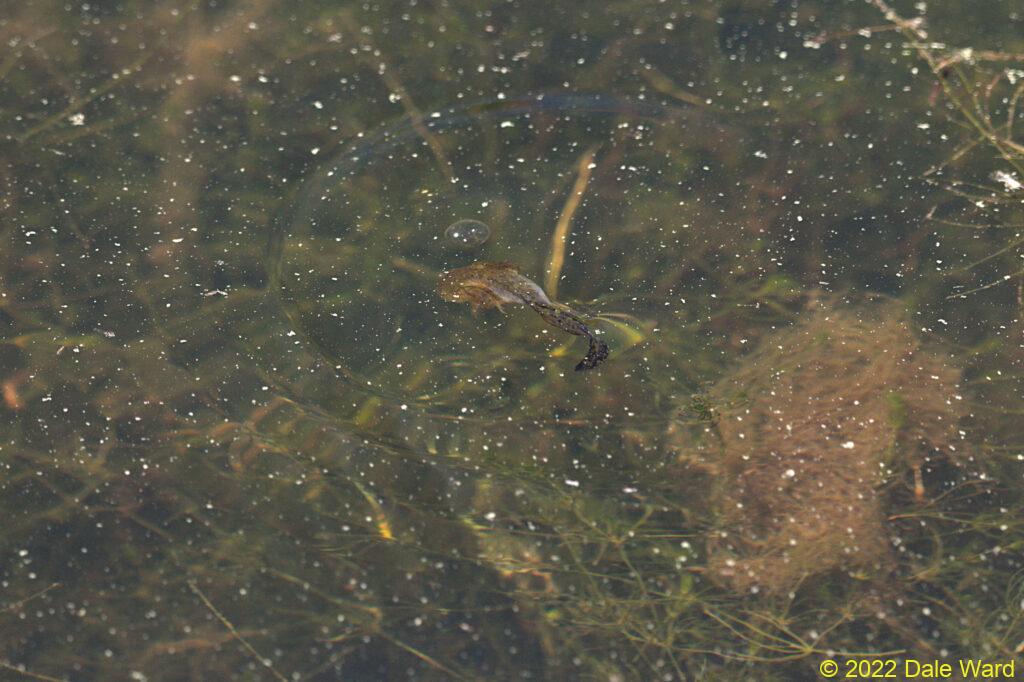 Tiger Salamander larva diving away from the surface after grabbing a gulp of air. I was surprised that they were breathing air at this stage, I thought that they started breathing air when they were larger.
Tiger Salamander larva diving away from the surface after grabbing a gulp of air. I was surprised that they were breathing air at this stage, I thought that they started breathing air when they were larger.
This air-gulp surprised me. I had thought that they did not start breathing air until they were further along in their development. And there were few cattle on the range at the time, meaning the tank was not yet murky and oxygen-poor, full of algae from manure.
I caught one of the larvae to get some photos. Here’s one with my much-photographed ‘finger for scale’ in the frame.
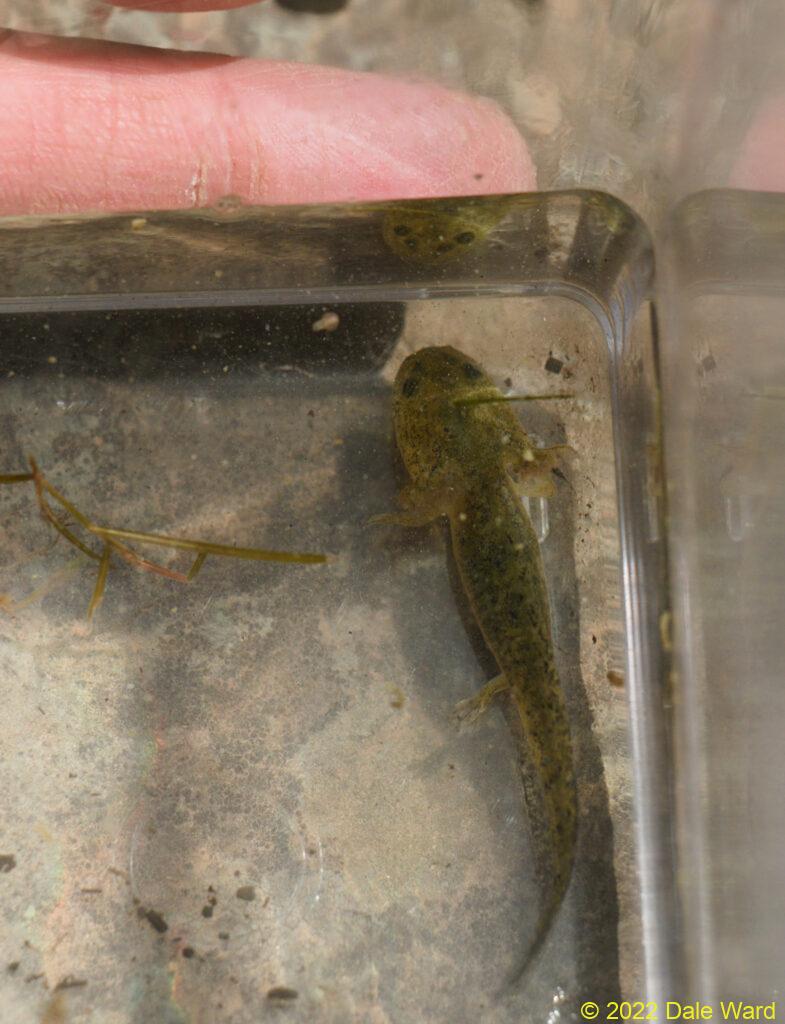 Tiger Salamander larva in plastic tub, with my finger for scale.
Tiger Salamander larva in plastic tub, with my finger for scale.
Here’s a Pro Tip for photographers - if you find yourself ruining photos by accidentally having one of your fingers in the frame, or your thumb partially obscures the lens, claim that you included your finger in the photo “for scale”.
That sounds much more professional than “Yeah my thumb got in the way.”
Anyway. I wasn’t having much luck using my little aquarium for photography, so instead I switched to using the “field expedient aquarium.” That’s photographer-speak for “getting the dog’s water dish out of the back of the Jeep.”
I noticed that the larva had at least one small Leech on its body, though I can’t see the Leech in these photos. The Leech did not seem to be anchored to the larva. Rather, it was inch-worming its way around in the larva. Sometimes it would pause and seem to stretch out with its head, seeming to quest for something. I’ve seen other larvae that had Leeches in this tank…I’ll try to get better photos of a Leech on my next visit.
 Larval Tiger Salamander posing in a “field expedient aquarium”.
Larval Tiger Salamander posing in a “field expedient aquarium”.
I released the larva back into the tank and continued my Salamander-stalk. I was also able to get out into the middle of the tank, where the water was deeper (2-3’?) and there was more submerged vegetation.
Ah! There were still adult Salamanders here!
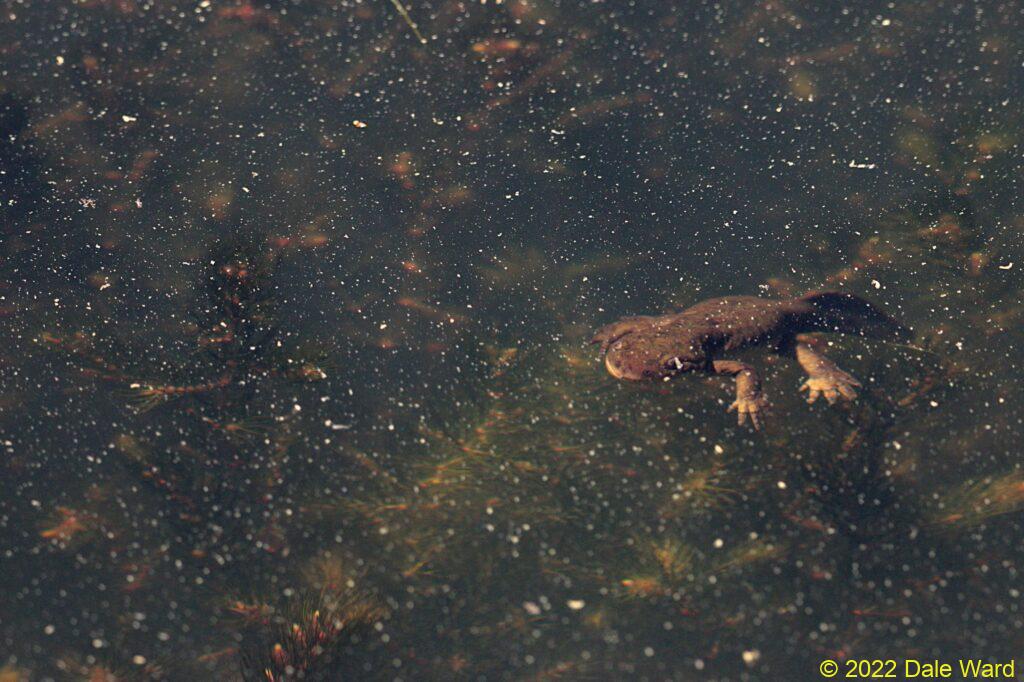 An adult Tiger Salamander slowly clambers over the submerged vegetation.
An adult Tiger Salamander slowly clambers over the submerged vegetation.
As I stood and watched, I started to see more and more adults. At one point I had four adult Tiger Salamanders in my field of view at once.
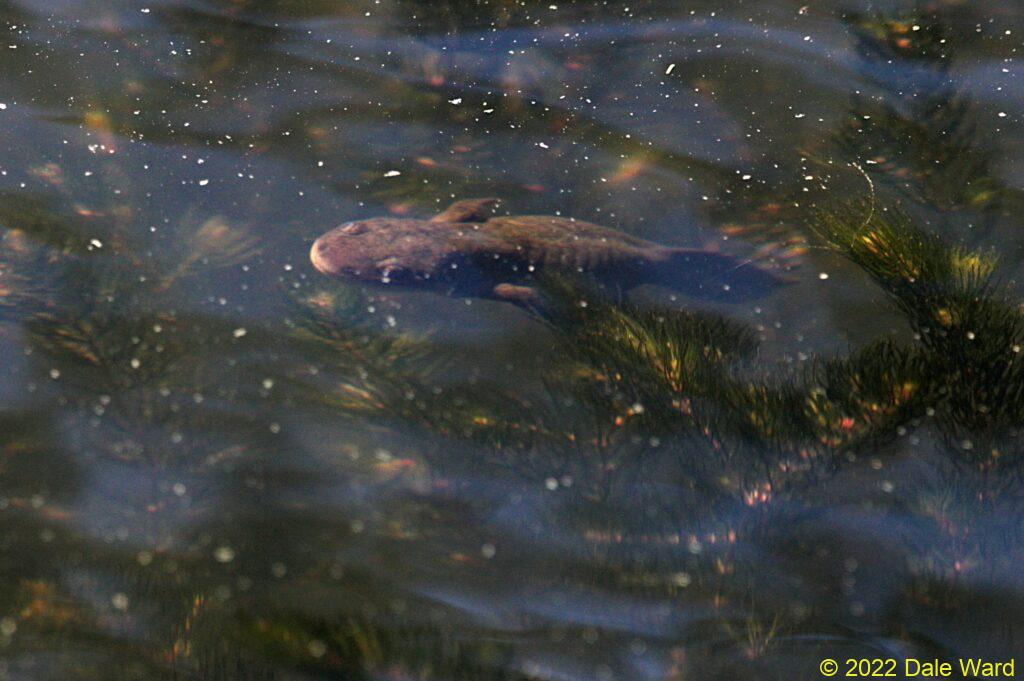 Adult Tiger Salamander swimming to the surface of the water for a gulp of air.
Adult Tiger Salamander swimming to the surface of the water for a gulp of air.
The adults mostly clambered over the masses of submerged algae. I’m assumed that they were searching for prey.
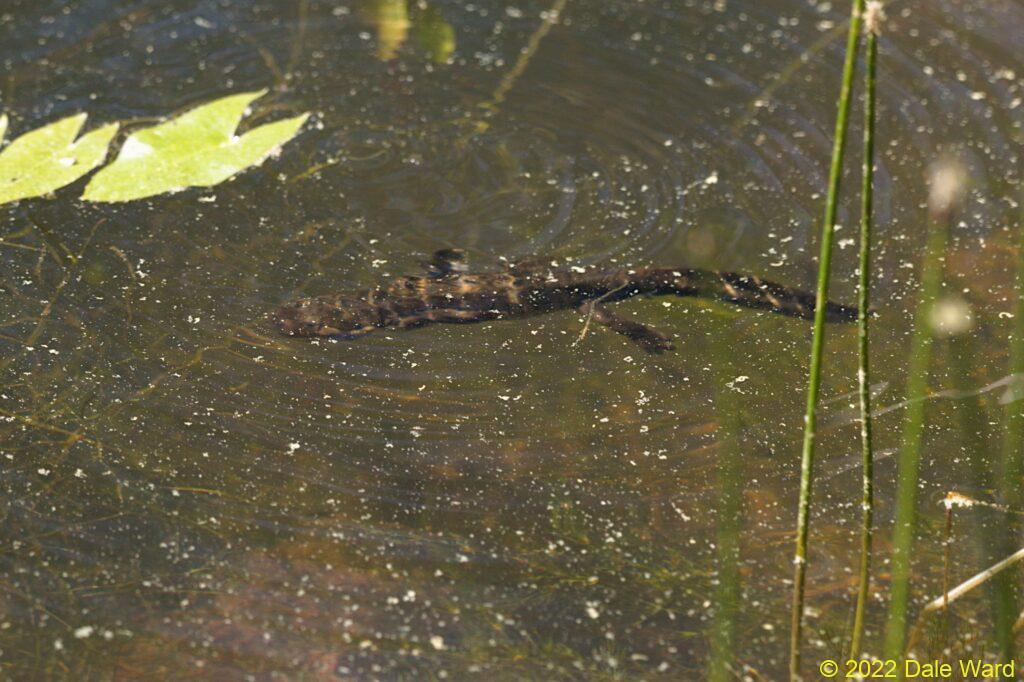 Adult Tiger Salamander dives after grabbing a gulp of air.
Adult Tiger Salamander dives after grabbing a gulp of air.
Sometimes a couple of adults would approach each other. Usually one would swim away while the other continued walking along the mass of submerged vegetation, other times they would just pass by each other. I didn’t see obvious evidence of fighting or mating. Other than having seen the larval Salamanders, of course. I mean, their presence would be evidence of mating, right?
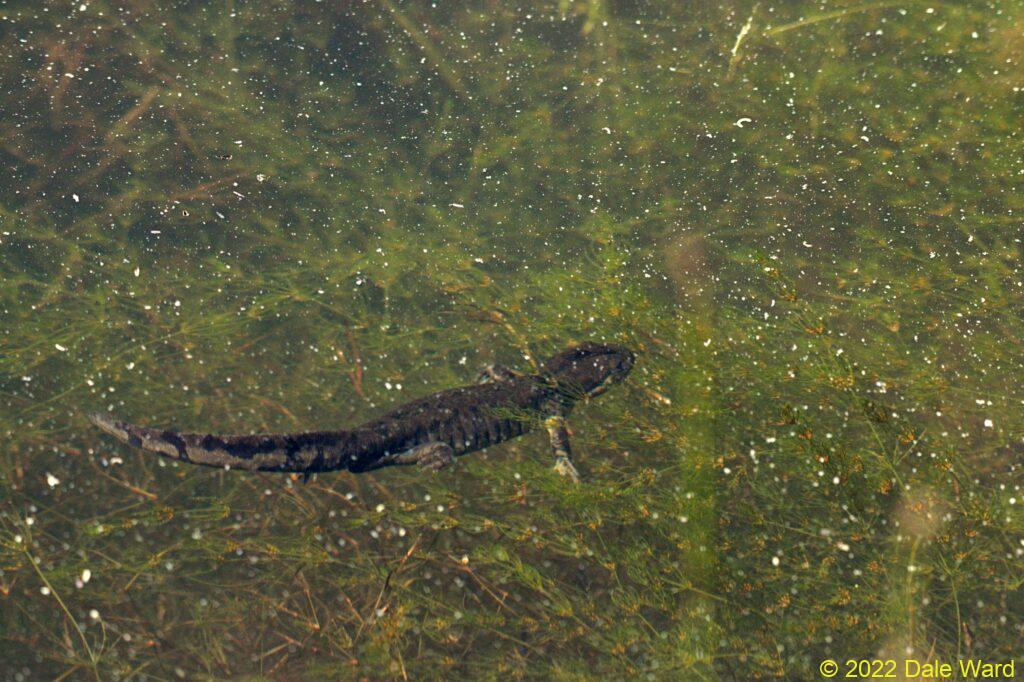 Adult Tiger Salamander walking over the submerged vegetation. This one was noticeably darker than the other adults.
Adult Tiger Salamander walking over the submerged vegetation. This one was noticeably darker than the other adults.
I thought the variety of colors of the adult Salamanders was interesting. Some, like the Salamander in the photo above, were very dark. I also thought it was interesting that the adults didn’t seem to have the ‘Tiger’ markings on them that I see on them when they were on land. I wonder if the Salamanders’ colors change when they enter breeding season, or if I simply can’t see their patterns from my viewing angle.
While I was watching the Salamanders, a group of three smiling women on horseback rode up to the tank. They stopped, and we chatted for a while.
I stood in the water, in my muddy trousers and ludicrous rubber boots, smelling perhaps of decaying pond vegetation. Squinting up at them, dressed in their their rough, dusty finery, as they sat those beautiful horses.
While Dragonflies flew by us on rattling wings and the pond roiled and boiled with Salamanders. Was this perhaps a perfect morning?
